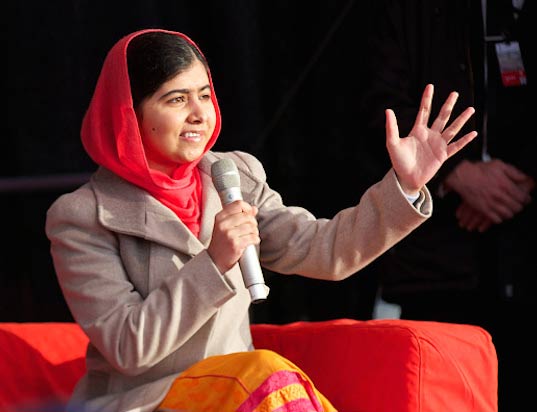 However, what separates He Named Me Malala is not only the magnificent story it portrays, but also the cinematography and film style the Guggenheim uses. Throughout the film he used very quick emotional changes from Malala being very happy in her home life to explosions back in her original home, and when asked about this Guggenheim said he wanted to depict what Malala’s life was really, because it has been all constant shifts. She did not ask to be placed in the public’s eye but instead woke up in a hospital in the United Kingdom one day, and found out that millions thought of her as a hero. In the film, on one day, she’s asking president Obama about drone strikes, and then she’s teasing and hitting her brothers … also, if the movie was just this sort of dark story about being shot, it wouldn’t show the full dimension of who she was, and I think we’re too numb to those stories.”
However, what separates He Named Me Malala is not only the magnificent story it portrays, but also the cinematography and film style the Guggenheim uses. Throughout the film he used very quick emotional changes from Malala being very happy in her home life to explosions back in her original home, and when asked about this Guggenheim said he wanted to depict what Malala’s life was really, because it has been all constant shifts. She did not ask to be placed in the public’s eye but instead woke up in a hospital in the United Kingdom one day, and found out that millions thought of her as a hero. In the film, on one day, she’s asking president Obama about drone strikes, and then she’s teasing and hitting her brothers … also, if the movie was just this sort of dark story about being shot, it wouldn’t show the full dimension of who she was, and I think we’re too numb to those stories.”
This film had animations scattered throughout, usually while a part of the story was being told. The animations would visually show the story while someone would be talking in the background. Guggenheim explained to us that he made the decision to have the movie like this because the way the stories were, the way they told them, it was like a story book; so he decided to make the movie like a story book. He also touched on the point of how the norms of documentaries are changing, and that there is more freedom to have creativity, such as animations, be a part of documentaries.
Guggenheim also told us his technique for putting all of the scenes together. He said that on his wall, he had sticky notes with the names of the different scenes on them, for example, “Breakfast” or “Fights with brothers.” He said that the wall gets filled with these cards, and that the structure of the movie is the order of these cards. He mentioned, “If you were to do a time-lapse of the two years I made this, the cards would just move around, and just fall off, some would come off, some would come up, and it would get smaller and smaller and smaller until I found the film.”
